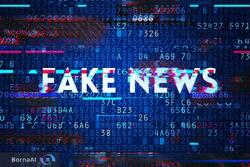The Silent Pandemic: Navigating the Treacherous Waters of Fake News
In an era defined by information overload, a new and insidious threat has emerged, one that silently erodes public trust and fuels societal discord: fake news. No longer confined to the fringes of the internet, misinformation has infiltrated mainstream media, posing a significant challenge to individuals and communities alike. This phenomenon is particularly potent during times of crisis, when anxieties run high and the thirst for information becomes insatiable. The proliferation of fake news not only undermines informed decision-making but also erodes the very foundations of a functioning society.
The mechanics of fake news are deceptively simple yet incredibly effective. Crafted with malicious intent, these fabricated or distorted narratives aim to manipulate public opinion, sow discord, and exploit vulnerabilities for political or economic gain. From clickbait headlines designed to lure unsuspecting readers to meticulously disguised propaganda campaigns, the arsenal of fake news purveyors is vast and constantly evolving. The rise of deepfakes, manipulated videos that appear incredibly realistic, adds another layer of complexity to the already challenging task of discerning truth from falsehood.
Crises, by their very nature, create the perfect breeding ground for misinformation. During periods of uncertainty and fear, individuals crave immediate answers and explanations. This heightened emotional state makes them more susceptible to sensationalized or emotionally charged narratives, even if those narratives lack factual basis. Social media algorithms, designed to prioritize engagement over accuracy, further exacerbate the problem. Content that generates strong emotional reactions, regardless of its veracity, is amplified and disseminated widely, allowing fake news to spread like wildfire.
The consequences of this misinformation epidemic are far-reaching and devastating. Beyond the immediate confusion and anxiety they generate, fake news erodes public trust in institutions, fuels conspiracy theories, and incites violence. The inability to distinguish fact from fiction undermines informed decision-making, both at the individual and societal levels, hindering effective responses to critical situations. Moreover, the constant bombardment of misinformation contributes to a climate of fear and distrust, fracturing communities and deepening social divides.
Combating this insidious threat requires a multi-pronged approach, beginning with cultivating media literacy. Individuals must develop the critical thinking skills necessary to evaluate information sources, identify biases, and recognize the telltale signs of manipulation. Checking the source of information, verifying the author’s credentials, and comparing reports across multiple reputable outlets are crucial steps in discerning fact from fiction. Furthermore, recognizing one’s own biases and resisting the urge to share information without proper verification are essential components of responsible online behavior.
Beyond individual efforts, fostering a culture of media literacy is paramount. Educational institutions, media organizations, and government agencies must collaborate to equip citizens with the tools and knowledge to navigate the complex information landscape. Promoting critical thinking, encouraging skepticism, and emphasizing the importance of verifying information should be integral components of educational curricula at all levels. Furthermore, social media platforms must take greater responsibility for the content they host, implementing robust fact-checking mechanisms and prioritizing accuracy over engagement. The fight against fake news is a collective responsibility, requiring vigilance, critical thinking, and a commitment to truth from individuals and institutions alike. Only through a concerted effort can we hope to stem the tide of misinformation and safeguard the integrity of our information ecosystem.
Identifying and Countering Fake News: A Citizen’s Guide
In the digital age, navigating the information landscape requires a discerning eye and a healthy dose of skepticism. The following strategies can help individuals identify and counter the spread of fake news:
-
Source Scrutiny: Examine the website or platform disseminating the information. Be wary of unfamiliar websites, suspicious domain names, and poorly designed or unprofessional-looking sites. Check the "About Us" section to understand the organization’s mission and potential biases.
-
Author Assessment: Investigate the author’s credentials and background. Anonymous or pseudonymous authors should raise red flags. Verify their expertise and look for any evidence of bias or a history of spreading misinformation.
-
Cross-Verification: Compare the information with reports from other reputable news outlets. If the information is only found on one obscure website or social media account, be highly skeptical.
-
Tone and Content Analysis: Pay attention to the language used in the report. Overly emotional, sensationalized, or provocative language can be a sign of misinformation. Look for evidence of factual inaccuracies, logical fallacies, and unsubstantiated claims.
-
Image Verification: Use reverse image search tools to verify the authenticity of images and videos. Manipulated or out-of-context visuals are often used to mislead viewers.
-
Comment Section Scrutiny: Examine the comments section for signs of bot activity, repetitive patterns, or unusually polarized opinions. These can be indicators of coordinated disinformation campaigns.
-
Bias Recognition: Be aware of your own biases and how they might influence your interpretation of information. Critically evaluate information that aligns with your pre-existing beliefs and be open to alternative perspectives.
- Pause Before Sharing: Resist the urge to share information immediately. Take the time to verify its accuracy and consider the potential consequences of spreading misinformation.
By practicing these strategies, individuals can become more discerning consumers of information and contribute to a more informed and resilient society. Media literacy is not just a skill; it is a responsibility, one that is crucial for navigating the complexities of the digital age and safeguarding the foundations of a healthy democracy.


